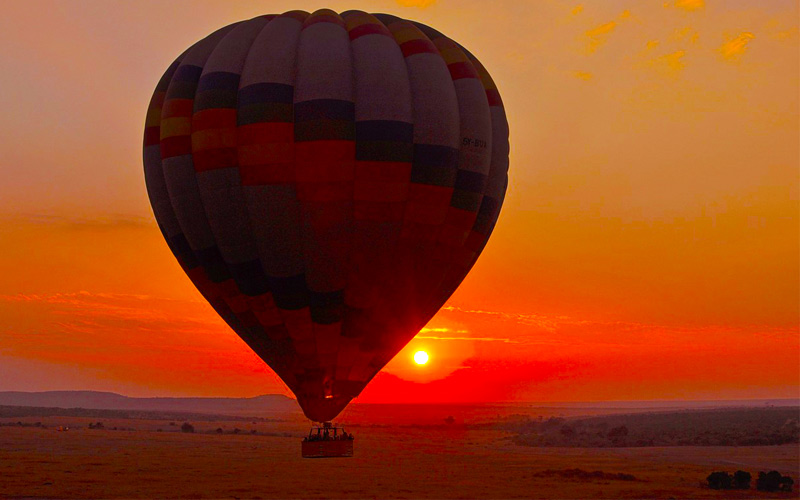Visitors are drawn to East Africa by the spectacular landscapes, animals, wide diversity of cultures and historical sites.
Tanzania’s national parks can broadly be divided into North, South and West amongst which are the most famous safari destinations but also a few hidden gems.
19 national parks and nature reserves in Tanzania cover about 37% of the country. These 155,000 square miles of protected areas are home to an incredible 310 mammal species, including the Big Five and over 910 different types of birds.
I've been fortunate enough to visit and work in some of these national parks in recent years. And I can honestly say that it's been a life-changing experience.
In this article, I'll share my insights on the Northern circuit national parks in Tanzania, the southern national parks in Tanzania, the western national parks in Tanzania, and the lesser-known national parks in Tanzania.
Let's get started!
My Quick Takeaways:
Planning to explore Tanzania's national parks? Here's what you need to know at a glance:
Northern Circuit Highlights:
- Serengeti National Park: Famed for the Great Wildebeest Migration, with over 1.5 million wildebeest, zebras, and gazelles traversing its vast plains.
- Ngorongoro Crater Conservation Area: A natural enclosure teeming with around 25,000 large animals, offering a chance to spot the Big Five in a single day.
- Tarangire National Park: Renowned for its large elephant herds and iconic baobab trees, especially vibrant during the dry season.
- Lake Manyara National Park: Known for its tree-climbing lions and the vast alkaline lake attracting flocks of flamingos.
Southern Circuit Gems:
- Ruaha National Park: Tanzania's largest national park, boasting significant populations of lions and elephants amidst its rugged landscapes.
- Nyerere National Park (formerly Selous Game Reserve): One of the largest faunal reserves globally, offering boat safaris on the Rufiji River to observe hippos and crocodiles.
Western Wonders:
- Katavi National Park: A remote and untouched wilderness, providing an authentic safari experience with abundant wildlife and minimal tourist traffic.
- Mahale Mountains National Park: Famed for chimpanzee tracking in its dense forests along the shores of Lake Tanganyika.
Additional Notables:
- Arusha National Park: Offers diverse ecosystems, from montane forests to open savannahs, and is home to Mount Meru.
- Kilimanjaro National Park: Encompasses Africa's highest peak, attracting trekkers from around the globe.
For a full breakdown, let's dive into my complete article. Ready? Let's go.
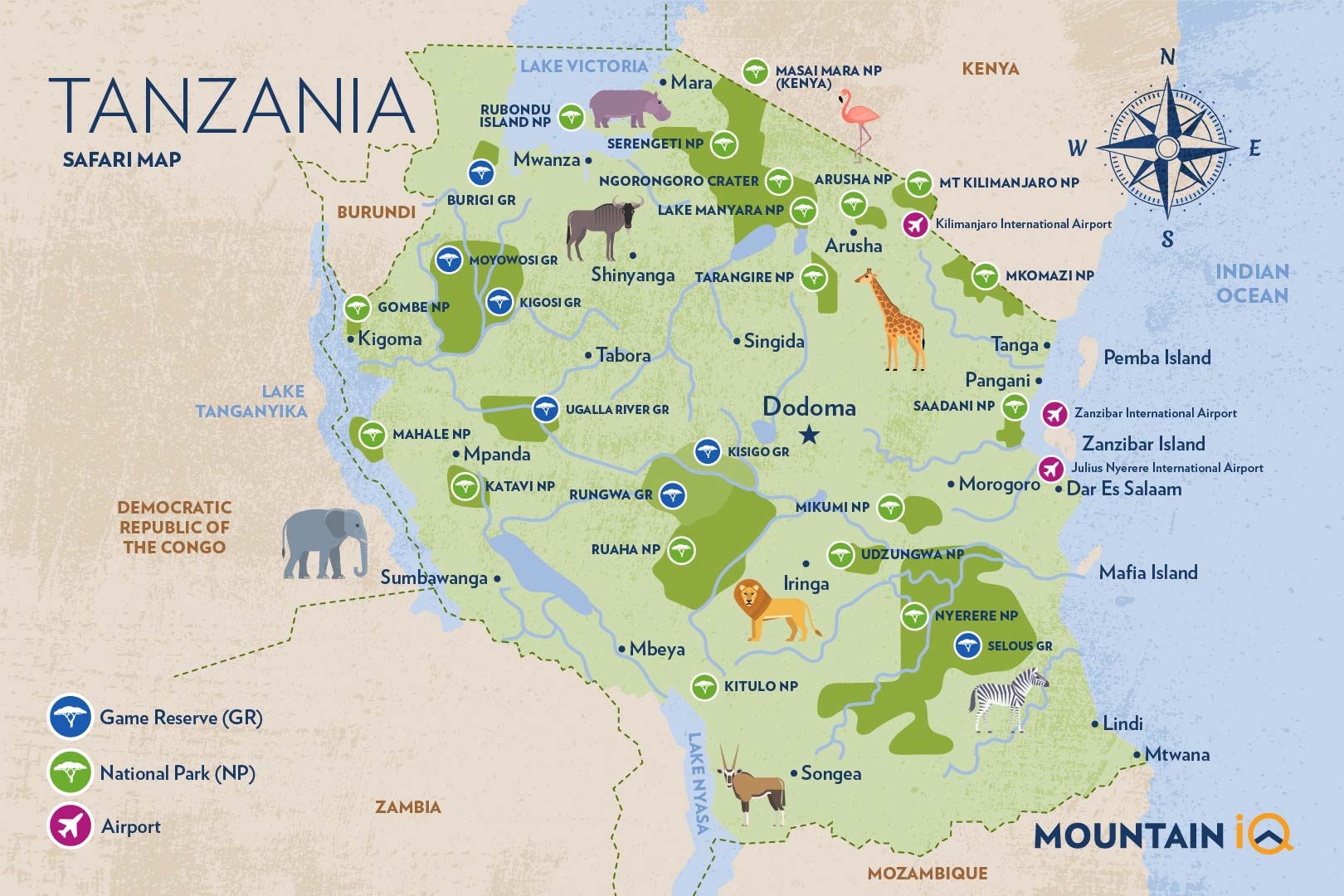
Tanzania National Parks and Game Reserves
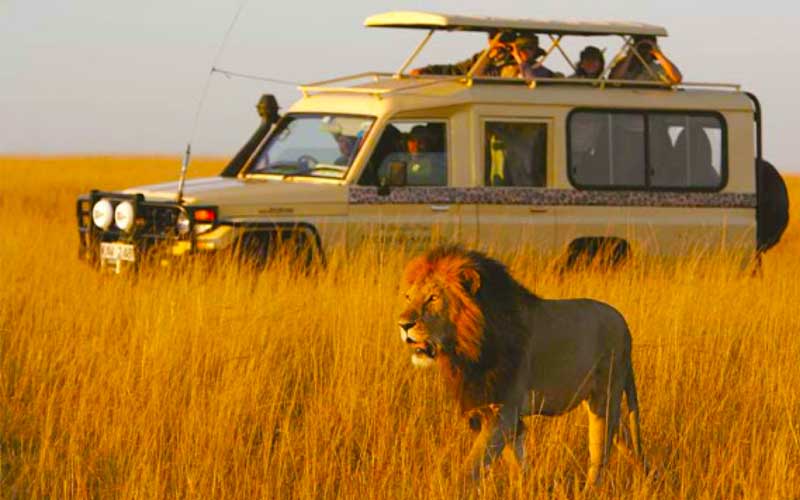
Plan your Safari experience
Check out these amazing deals on epic safari experiences now.
Tanzania National Parks FAQs
Which national parks are in the Northern Circuit?
There are seven national parks that form part of what is called the Northern Circuit:
- Serengeti
- Ngorongoro
- Tarangire
- Lake Manyara
- Arusha
- Kilimanjaro
- Mkomazi
These are the most popular Tanzanian national parks by far for visitors and tourists alike.
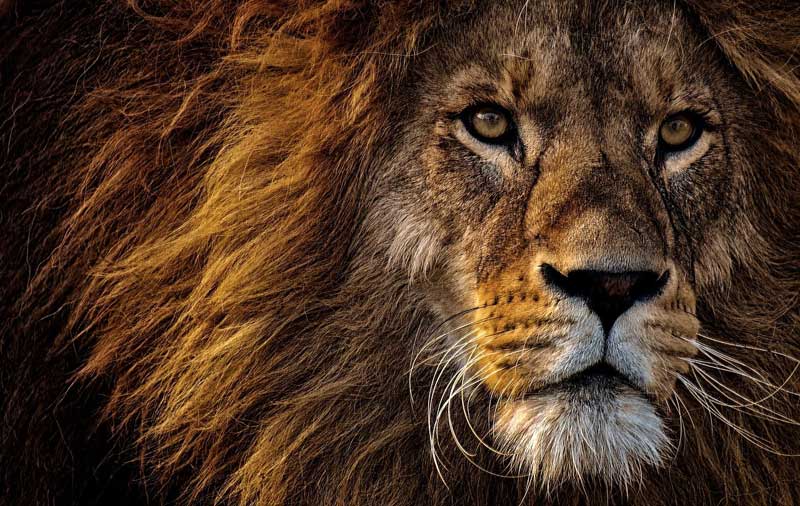
Serengeti National Park
Serengeti National Park is located 320km northwest of Arusha. With a name that means endless plains, this is the most famous safari destination.
The major attraction in the Serengeti is the Great Wildebeest Migration when over 1.5 million wildebeest, zebra and gazelle migrate to Kenya’s Masai Mara following the rains.
Below is a map of the great wildebeest migration broken down into different seasons:
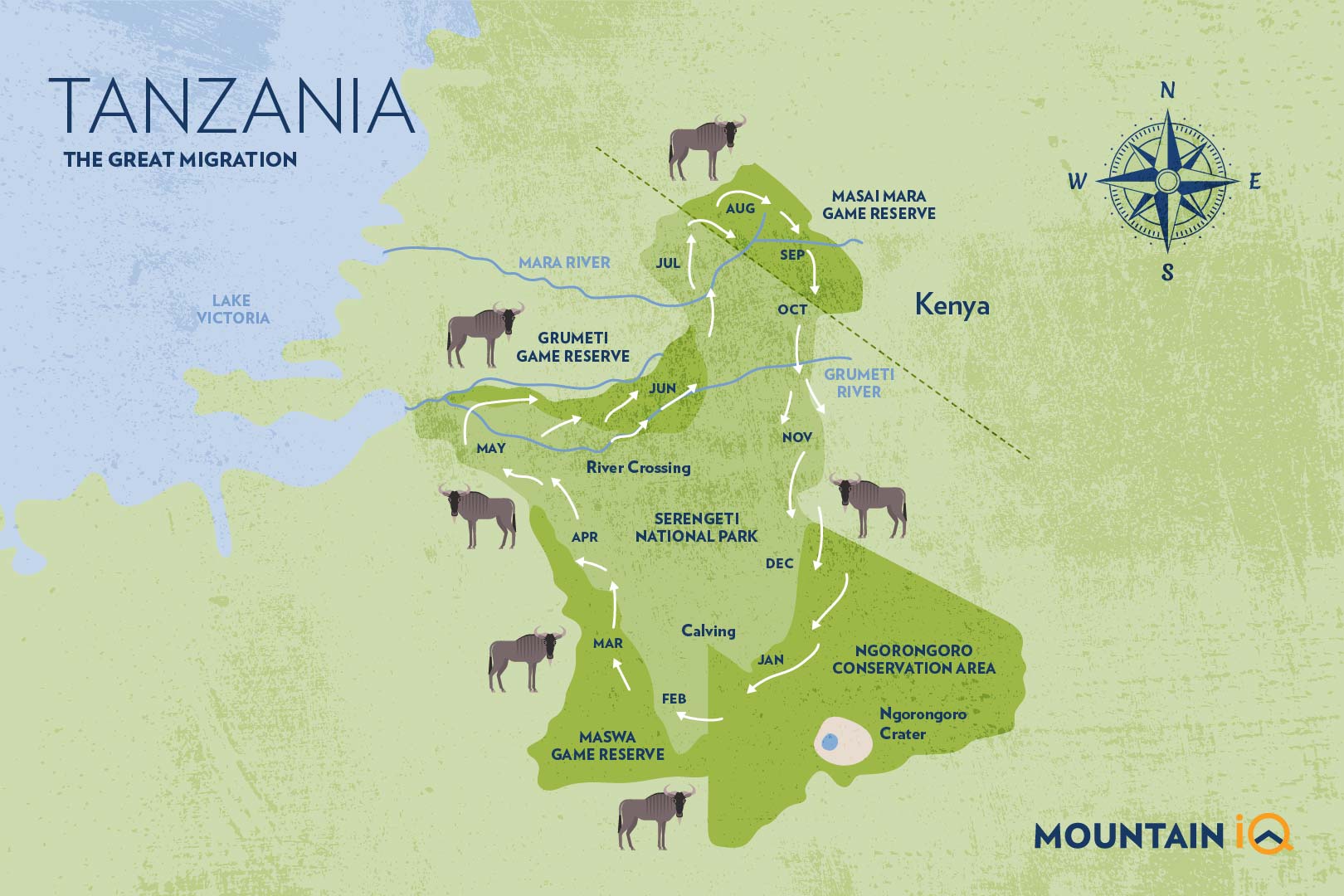
The Serengeti is a great place to see hunting predators, especially during calving season (January-February).
See more info on what animals live in the Serengeti.
Size: 5,700sq miles / 14,760km²
Notes: Low day fees. Crowded during peak season.
Ngorongoro Crater Conservation Area
Between Arusha and the Serengeti, the Ngorongoro Conservation Area is home to around 25, 000 large animals. This is a chance to see all of the Big 5, including the elusive black rhino, in a single day!
The conservation area is home to nomadic Maasai tribes and livestock and wildlife graze side by side. The Olduvai Gorge is a significant archaeological site for human evolution.
Size: 3,166sq miles / 8,200km²
Notes: The entrance fee is rather expensive ($200 per vehicle) and it does get crowded.
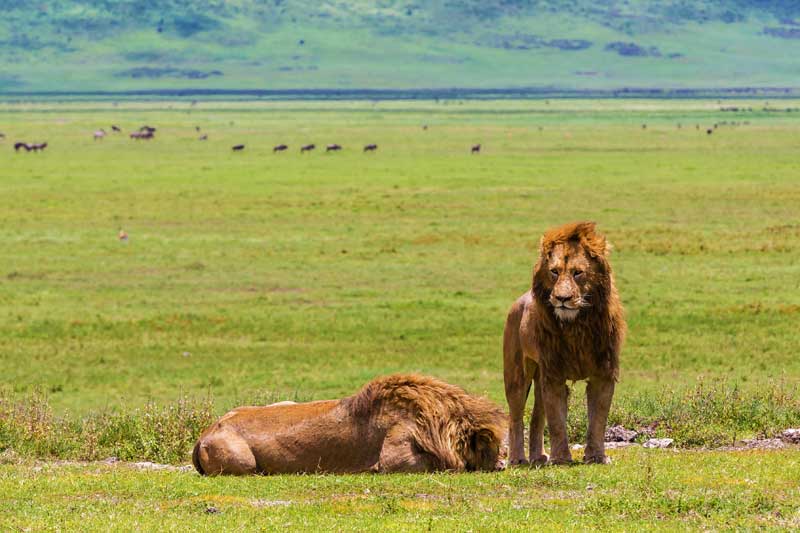
Tarangire National Park
Tarangire National Park is a 3-hour drive from Arusha. High densities of animals including about 3,000 elephants migrate to the Tarangire River during the dry season.
At this time the park is exceptional for game viewing and has more elephants per square mile than any other park in Tanzania.
Tarangire is also well known for its stunning landscape of baobabs and scattered termite mounds that house dwarf mongoose families.
The extensive swamp system supports some of the 550 bird species in this park.
Size: 1,100 square miles / 2,850km²
Notes: Wildlife-viewing is seasonal during June-October.
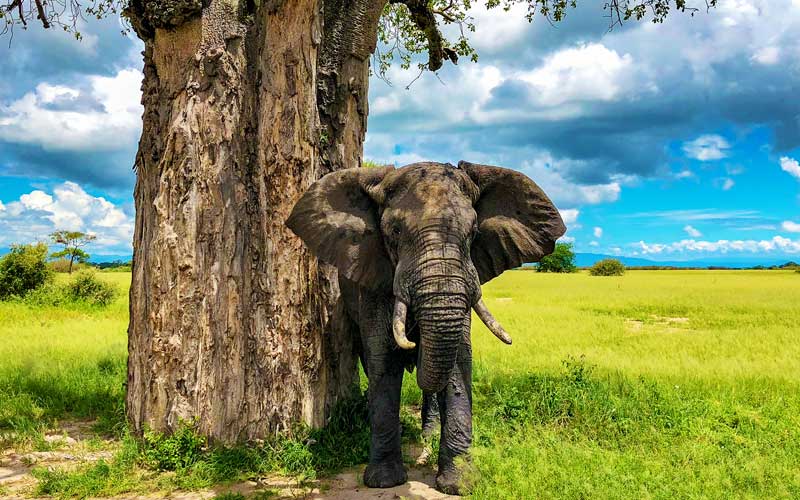
Lake Manyara National Park
Most of Lake Manyara National Park is covered by water.
Just 126 km (78 miles) outside Arusha, it is perfect for a few hours visit to see the hot springs and take a canopy walk.
Tree climbing lions are a huge drawcard as well as relaxed elephants and thousands of baboons in the groundwater forests. Roads can become flooded between April-May.
Size: 250 sq miles/ 648km²
Notes: It is best to visit early in the morning as crowds arrive in the afternoon.
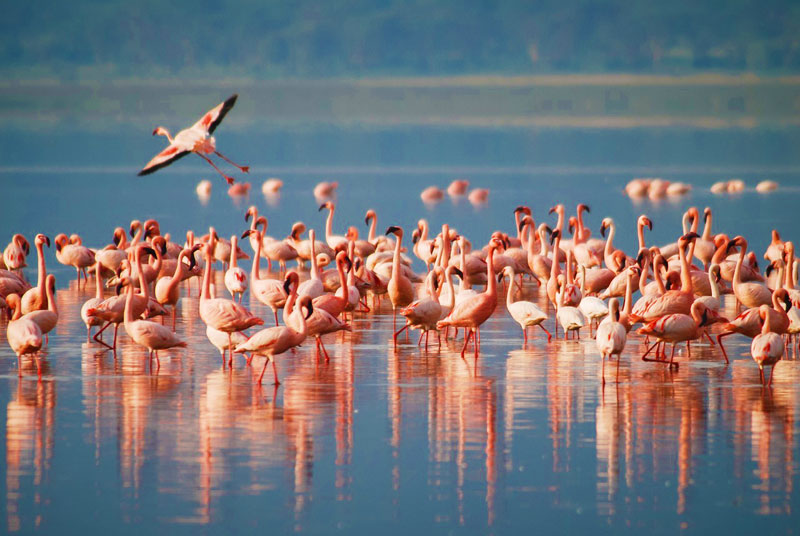
Read more helpful hotel reviews on Lake Manyara Kilimamoja Lodge and Manyara Serena Safari Lodge for your visit to Lake Manyara.
Where to stay? Here are 5 of my favourite accommodation options close to Lake Manyara:
- Lake Manyara Kilimamoja Lodge
- Manyara Serena Safari Lodge
- Ngorongoro Marera Mountain View Lodge
- Karatu Tented Lodge
- Pembeni Rhotia
See more Lake Manyara accommodation options.
Arusha National Park
Located 1.5 hours outside Arusha on the foothills of Mount Meru, Africa’s 5th highest mountain. Many hikers use this peak to prepare for Kilimanjaro.
Arusha National Park's common big game species are giraffe, zebra and buffalo as well as primates in the forest patches. You can also see flamingos, whilst canoeing on the Momella Lakes.
Size: 53 sq miles / 137 km²
Notes: It is not a Big 5 park.
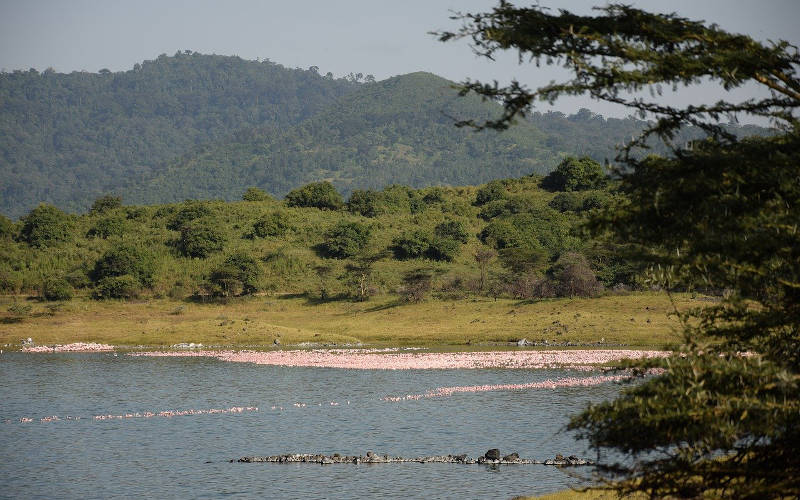
Kilimanjaro National Park
Kilimanjaro is Africa’s highest peak (5895m) and attracts hundreds of climbers each year. The park borders Kenya in the Moshi region.
Other than climbing Kilimanjaro, visitors can find 140 mammal species here including elephants, leopards, buffalos, tree hyrax, blue monkeys and black-and-white colobus monkeys.
Admittedly, seeing elephant, leopards or buffalo in Kilimanjaro National Park is incredible rare nowadays.
Size: 652 square miles 1688km²
Notes: June-October trails are dry for hiking.
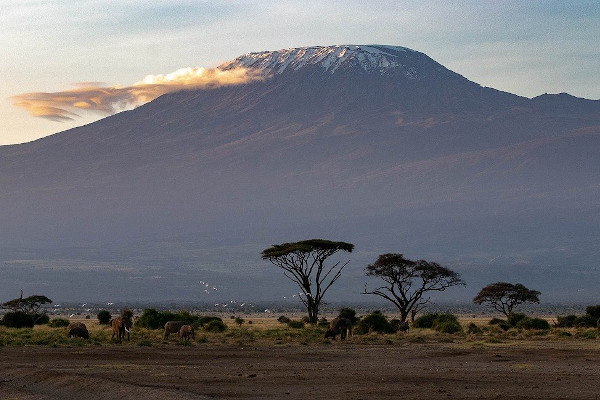
Mkomazi National Park
Mkomazi National Park is 120km east of Moshi and shares boundaries with Tsavo National Park in Kenya.
Animals move freely between the countries in the Mkomazi-Tsavo ecosystem. The usually rare gerenuk and oryx are easily sighted here and wild dogs have recently been reintroduced. Mkomazi has the Big 5, rhinos are in a fenced-in area.
Size: 1,256sq miles / 3,254km²
Notes: good sightings with fewer crowds
Which national parks are in Southern Tanzania?
There are six national parks and game reserves in Southern Tanzania:
The Southern national parks boast some of the most exclusive safari tours and diverse ecosystems in Tanzania.
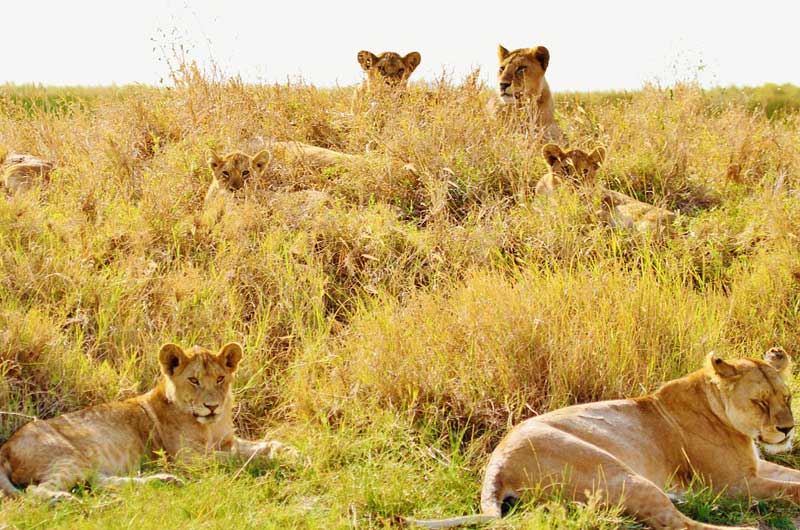
Ruaha National Park
Located in central Tanzania, Ruaha is the second largest national park in East Africa.
Home to 10% of the world’s lion population and Tanzania’s largest elephant population, Ruaha is also one of the best places to see wild dogs and rare striped hyenas.
Size: 7,807sq miles / 20,220km²
Notes: Fewer tourists come here, but accommodation is limited and expensive.
Which tour? Here are 3 Ruaha safari tours I highly recommend:
- Budget Ruaha Wildlife Safari (incl. Mikumi) (5 days)
- Best of Selous, Mikumi and Ruaha Safari (8 days)
- Epic Ruaha Adventure Safari (incl. Mikumi and Selous) (9 days)
See more Ruaha safari deals.
Nyerere National Park (Selous)
Nyerere National Park (formerly Selous Game Reserve) is the largest wilderness area in Africa. Wildlife is abundant and there are few tourists.
Some of the 4000 lions can usually be seen on the lake shores and you have a good chance of finding leopards and wild dogs. Boat trips are offered along the Rufiji River to see crocodiles and hippos.
Size: 21,000sq miles / 54,000km²
Notes: Animals spread out over the wet season.
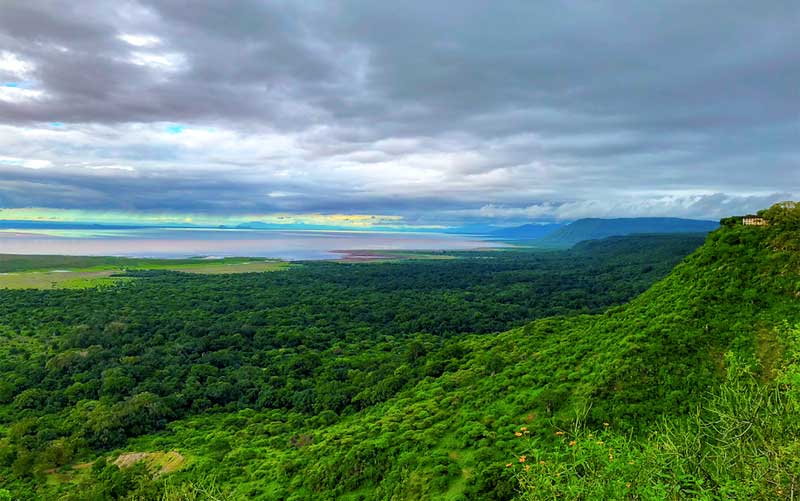
Mikumi National Park
Located 155 miles/250km from Dar Es Salaam, Mikumi is often called the ‘Little Serengeti'.
In the dry season, the Mkata floodplains and baobab scattered savannah attract large herds of wildebeest, zebra and buffalo pursued by hyena and lion.
The rare Somali giraffe, sable and Lichtenstein’s hartebeest are frequently sighted along the park’s single road circuit. Circuit.
Size: 1,247sq miles / 3, 230km²
Notes: Good mid-price accommodation.
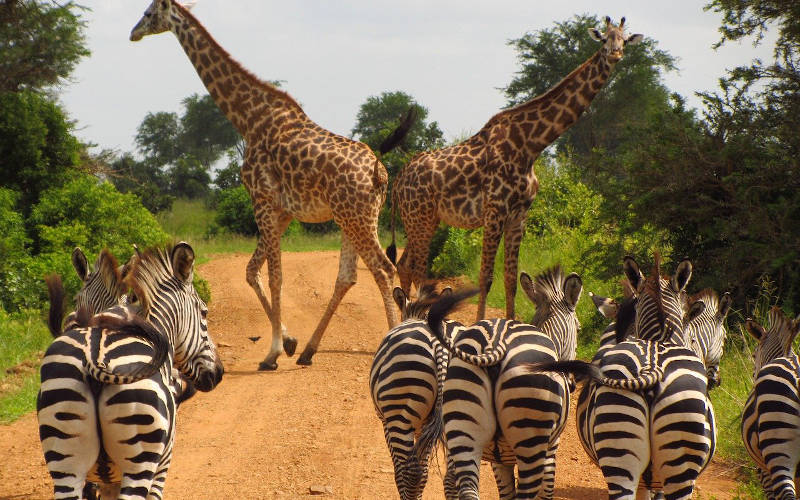
Kitulo National park
The Serengeti of Flowers, Kitulo National Park has an amazing diversity of plant species including 45 different orchids.
Zebra, reedbuck and eland graze the grasslands of the plateau where you can also find Tanzania’s only population of Denham’s bustards.
A new monkey species, the Kipunji, was discovered in these forests. Half-day hikes take you over the Livingstone Mountains to Matema Beach on Lake Nyasa.
Size: 160 sq miles/ 413k m²
Notes: No dangerous wildlife.
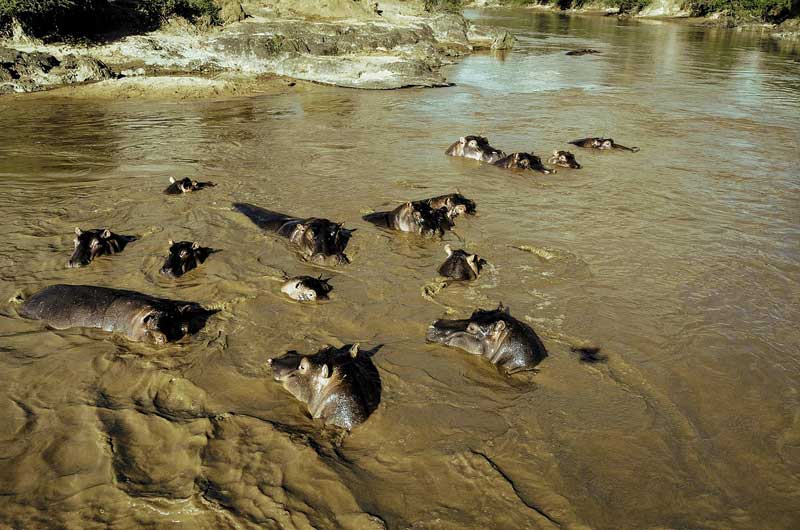
Katavi National Park
Katavi is extremely remote but worth the effort for its exclusivity and amazing wildlife viewing.
Animals congregate at the Katuma River including thousands of buffalo, hippo and rare roan antelope.
Katavi has a lot of cheetahs and is the best place to see lion-buffalo interaction. It is often remarked that you will see more predators than people in this park.
Size: 1,730sq miles / 4,500km²
Notes: There are two weekly flights to Katavi from Dar Es Salaam.

Plan your Safari experience
Check out these amazing deals on epic safari experiences now.
Udzungwa Mountains National Park
Tucked in Tanzania’s Eastern Arc Mountains, Udzungwa has no road network and can only be explored on foot.
Options range from short and easy walks to the Lumemo Trail, a 6-day camping trek. A popular trail goes to the 170m Sanje Waterfall, one of the biggest in Tanzania.
The park is a biodiversity hotspot; a quarter of the plants and four primates, including the Sanje mangabey, are endemic.
Size: 770 sq miles / 1, 990 km²
Notes: No dangerous wildlife.
Which tour? Here are 5 Serengeti safari tours I highly recommend:
- Group Camping Safari that includes Tarangire and Ngorongoro (4 days)
- Budget Serengeti Safari (5 days)
- Scenic Northern Tanzania Safari (7 days)
- Serengeti Trail that includes Ngorongoro (8 days)
- Best of Kenya and Tanzania (incl. 6 national parks) (12 days)
See more Serengeti safari deals.
Which national parks are in Western Tanzania?
There are two national parks in Western Tanzania:
- Gombe
- Mahale
These Tanzanian national parks are most famous for their lush tropical rainforests and unique populations of chimpanzees.
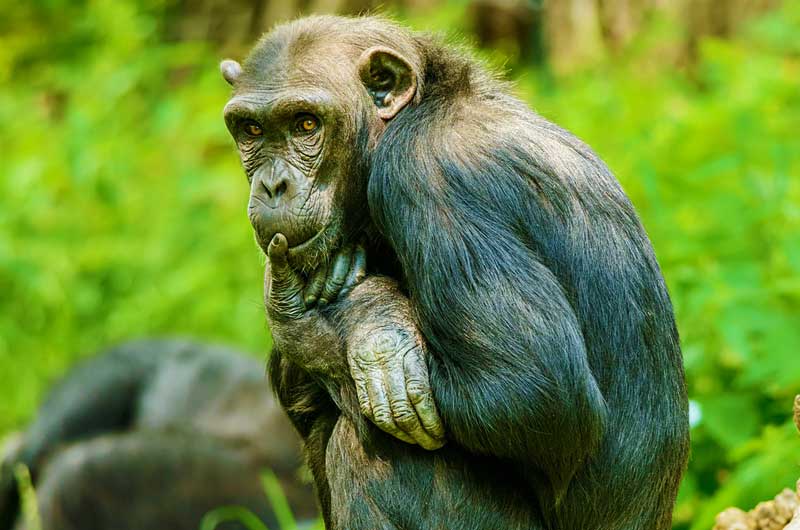
Gombe Stream National Park
Situated 10 miles from Kigoma by boat across Lake Tanganyika, Gombe Stream is a patch of tropical rainforest, a primate’s paradise. The park is famous as the site of Jane Goodall’s research and the main attraction is trekking to see chimpanzees. Visitors also swim or snorkel in the lake.
Size: 13.5 square miles / 35 km²
Notes: It is never crowded but takes extra effort to get here.
Which tour? Here are 3 Gombe safari day tours I recommend:
- Gombe Safari (2 days)
- Moshi Safari that includes Gombe and Kigoma (3 days)
- Chimpanzee Tracking Safari (4 days)
Mahale Mountains National park
In the extreme west of Tanzania, Mahale Mountains is the largest protected population of eastern chimpanzees. Of the 800 resident chimps, a community of 56 are very habituated to people.
Habitats here are mostly rainforest, bamboo forests and grasslands where you will find eight other primate species, including 3 types of galago. Lions and elephants are rarely seen.
Size: 618 sq miles / 1,600 km²
Notes: It is never crowded and accommodation is expensive.
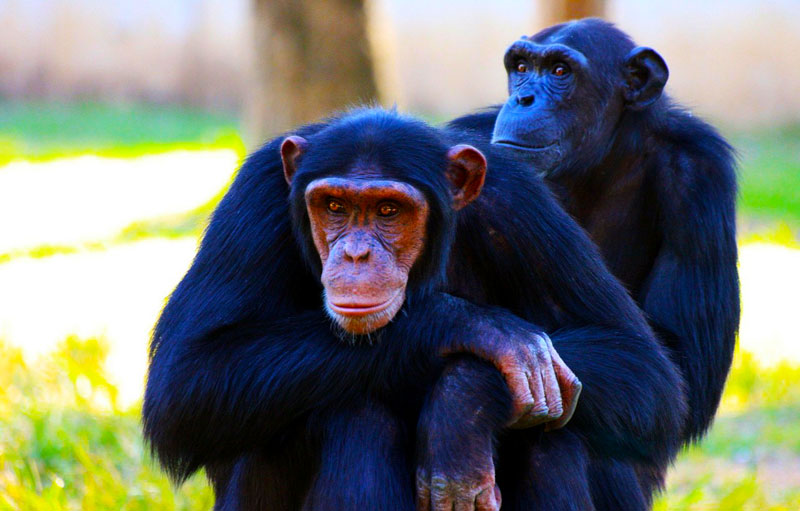
What are the lesser known national parks in Tanzania?
There are four lesser known national parks in Tanzania:
- Burigo-Chato
- Rubondo Islands
- Saadani
- Saanane
While people are less aware of these national parks, they still have a lot to offer potential tourists in the way of beautiful aquatic landscapes and diverse wildlife populations.
Burigi-Chato National Park
In 2019, three-game reserves were combined to create Burigi-Chato National Park. The main attraction here is Lake Burigi, Tanzania’s 3rd largest lake.
The park’s swamps are known for the shoe-billed stork and rare sitatunga antelope. Giant Cape elands are also common here.
Size: 1,817 sq miles / 4,707km²
Notes: It has the Big 5 except Rhinoceros. Only camping is available.
See more info on what to expect for Tanzanian camping safaris.
Rubondo Islands National Park
Rubondo Island has its own airstrip and you can fly-in or take a boat from Kasenda. 75% of the island is covered by pristine rainforest.
Chimpanzees, giraffe elephants and sitatunga were introduced here in the 1960s. Rubondo Island Camp is the only accommodation.
Size: 176 sq miles / 456 km²
Notes: Remote and exclusive.
Read more on what to pack for a safari and the best safari clothes to wear in Rubondo.
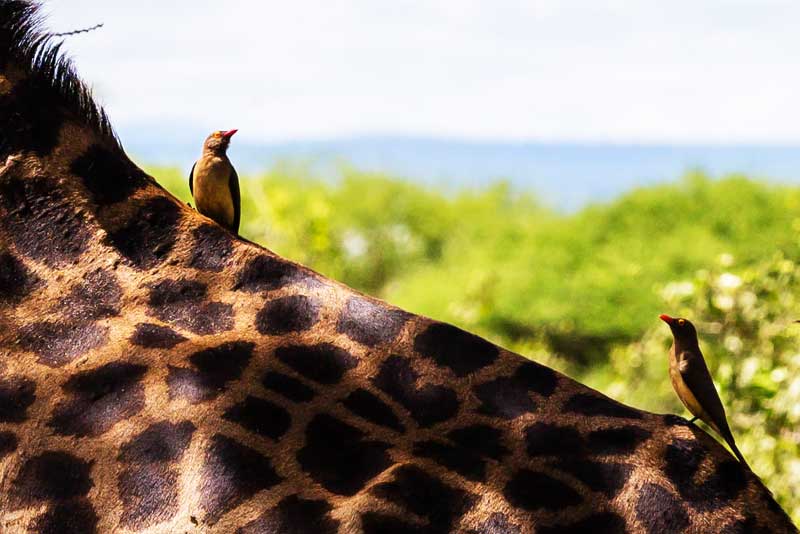
Saadani National park
Saadani is the only Tanzanian reserve bordering the ocean. It may not be the best park for game viewing but does have elephants and buffalo as well as less common red forest duikers and Roosevelt’s sable.
The park is a green turtle breeding site and there you may spot humpback whales and dolphins from the coast.
Size: 410sq miles / 1,062 km²
Notes: It's the closest park to Zanzibar with connected flights.
Saanane Islands National Park
Saanane Islands on Lake Victoria is the smallest Tanzanian national park. The islands are 2km southwest of Mwanza City and can be reached by boat.
There are zebra and impala here as well as rock hyrax, vervet monkeys and clawless otters. You will also find interesting reptiles including monitor lizards, pancake and leopard tortoises and agama lizards.
Size: 0.84 sq miles / 2.18 km²
Notes: Day visitors can picnic, walk or go fishing.

Plan your Safari experience
Check out these amazing deals on epic safari experiences now.
My Final Thoughts
And that's a wrap on the 19 Tanzanian national parks! Whether it's nature or adventure that you seek, there's something for everyone in Africa's #1 'Safari Country'. What do you think? Let me know in the comments below.

